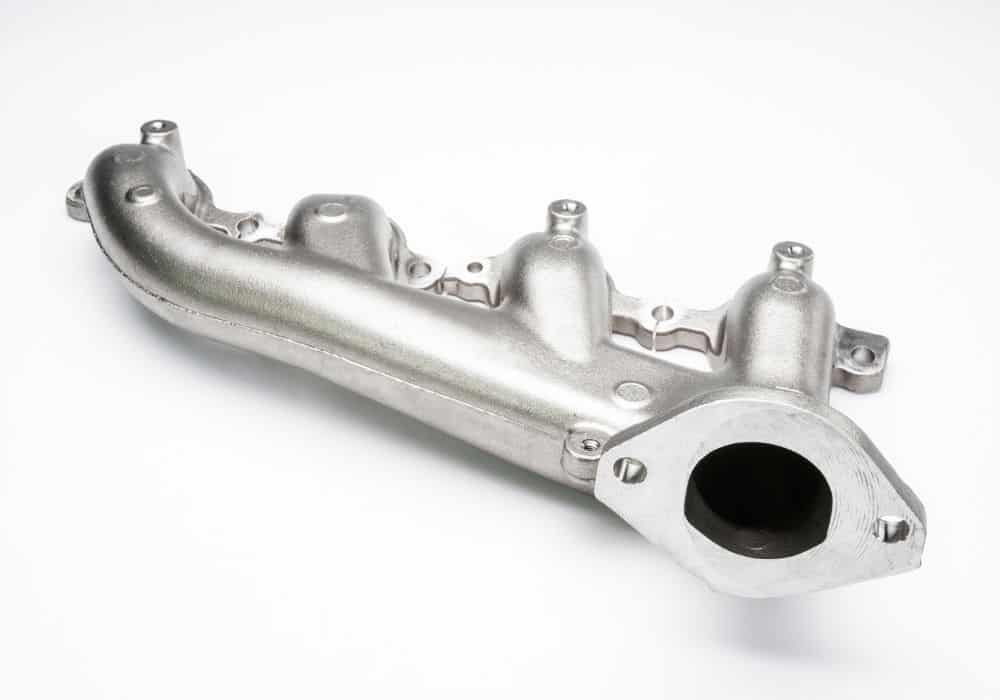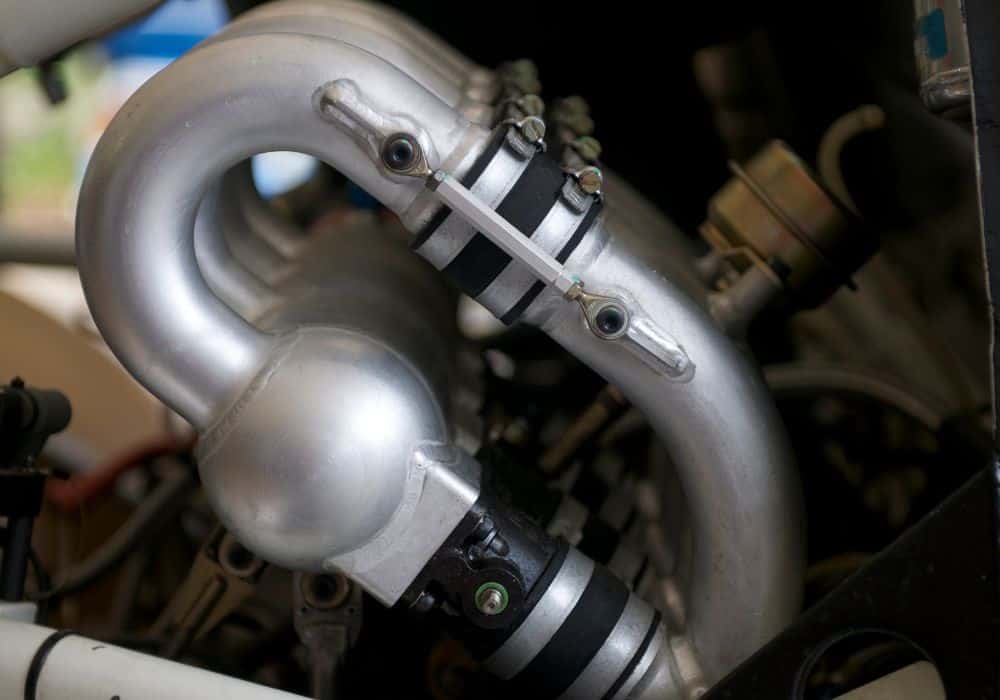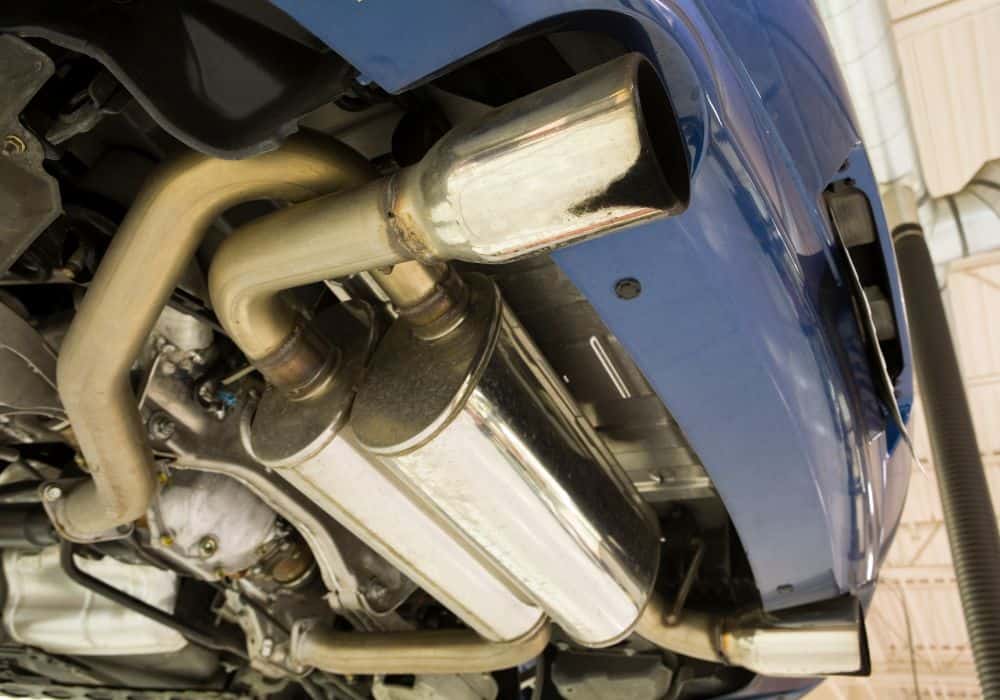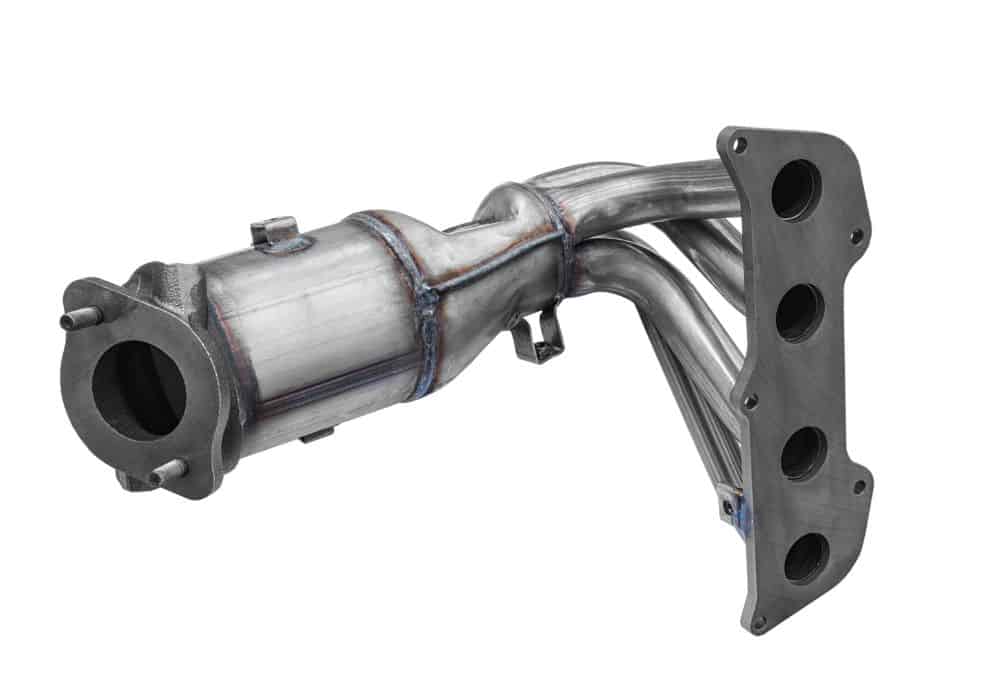Many people often use the terms header and manifold interchangeably. But these are two different components, although they have the same function.
A pipe header is usually used for high-performance applications, while a manifold is used on regular production vehicles. In other words, a pipe header is an aftermarket upgrade meant to enhance performance, while the manifold often comes standard on most vehicles.
There’s more to it than this, of course. Here we’ll look at pipe header vs manifold and give you all the info you need. Let’s get started!
What is a Pipe Header?

A pipe header is an essential component that helps to route exhaust gases from the internal combustion engine to the exhaust system. It is typically made of thin steel tubing with long runners for each port before merging.
The individual runners may have the same length or vary depending on the engine type. A header is added to boost the engine’s power by reducing exhaust backpressure as an aftermarket upgrade used on high-performance vehicles. That enables the engine to breathe easily.
There are mainly four types of headers; long-tube headers, Tri-Y headers, lakester headers, and shorty headers. Long tube headers connect the engine to the mid-pipe, allowing major performance enhancements and aggressive sound. In addition, these headers are designed to handle any power modifications in the future.
The Tri-Y has a “Y” shape that enables the exhaust gases flowing from one tube to flow through it and scavenge air from the other tube. As a result, they produce the highest horsepower and more low-end torque than similar 4-1 headers.
Lakester, as the name suggests, is designed for dry lake racing. They have short tubes and are mostly found in hot rod cars. Last but not least, the Shorty headers work best in the idle to mid-RPM range. That makes them ideal for vehicles that rely on low-RPM power, such as daily commuters.
What is a Manifold?

A manifold or exhaust manifold is a simple component that typically serves the same function as the header. It collects exhaust gases from the car’s engine and delivers them to the exhaust system. Conversely, a pipe header consists of stainless steel or thick cast iron and is found on most standard production vehicles.
The word exhaust manifold implies that the component receives gases from multiple cylinders and then folds them into a single output, a tube leading to the exhaust.
For instance, an 8-cylinder engine comes with eight outlets, one outlet for every cylinder. So, an exhaust manifold is needed to take the exhaust fumes off all eight cylinders into a single pipe.
The only purpose of the manifold is to transport the exhaust gases from the combustion engine to the rest of the exhaust system, where they are expelled.
Engines with cylinders arranged in line typically have a single exhaust manifold. But those with V-type cylinder arrangements (V6, V8) have two separate manifolds – one mounted onto each cylinder head.
Pipe vs Manifold Detailed Comparison
So far, you know what a header and manifold are. Let’s get you into the details of what makes them different, although they are designed to serve the same purpose.
1. Structural difference
The structural difference between a pipe header and a manifold is the size and material. A manifold is typically shorter and made of thick cast iron. That makes it sturdier and more durable. On the other hand, a pipe header is made of lighter and thinner steel and is longer than the manifold.
The cast iron enables the manifold to cope with the high heat and pressure from exhaust fumes. However, this material is typically prone to cracking.
Also, its thick walls leave small space for gasses to pass through. The walls are also rough, which contributes to the slow flowing of the exhaust gasses and ultimately causes back pressure.
On the other hand, a pipe header has smoother walls that are roomy enough to allow for a faster flowing of exhaust gasses. That prevents back pressure issues.
2. Performance

A pipe header is generally a better option than an exhaust manifold. As mentioned, an exhaust manifold creates back pressure, and that lowers horsepower or performance. Also, each engine’s cylinder is assigned its own tube, which can further create back pressure problems.
A header does away with this issue and allows exhaust gases to be expelled more efficiently. For that, it is used in high-performance cars as it allows the vehicles to breathe more easily and ultimately boosts horsepower.
The thin walls of the header also allow for better temperature expulsion, which enables you to enjoy a more comfortable ride.
You can switch to a header or continue using the OEM manifold. Ultimately, your choice will trickle down to how you want your vehicle to perform. But a header is the way to go if you want your car to perform better; no wonder performance enthusiasts prefer this aftermarket upgrade.
If you decide to install a header, consider going for the long tube one if you want maximum performance boosts. But the Shorty headers are ideal for turbochargers.
3. Sound
A pipe header seems better than a manifold in all aspects. But, besides performance, another thing that distinguishes a header from a manifold is its sound.
Since a manifold has thicker walls, it absorbs most of the sound from the exhaust. On the other hand, the header allows you to hear all the noise from the engine because its thin walls don’t absorb much of it. So, you will surely turn heads as you drive down the street with a header.
On the other hand, a manifold perfectly suits a daily driver, but a header is an excellent choice for anyone with a performance machine. Install a header if you want to get noticed as you cruise around the town or city.
4. Cost

The cost is probably the elephant in the room when it comes to a pipe header vs manifold. Although a header seems a better choice than a manifold in most aspects, the cost is a critical factor to consider.
If you decide to go for a header, be prepared to cough a good amount of money. Like many aftermarket performance upgrades, headers also don’t come cheap. For instance, a decent header for a Nissan 370Z costs approximately $700.
Conversely, keeping your stock manifold will not cost you a penny. If you are a true performance enthusiast, you will probably stop at nothing to achieve the performance boost you want.
5. Weight
A pipe header also wins in terms of overall weight savings between the two designs. As mentioned, manufacturers utilize thick cast iron to make exhaust manifolds. This material is thicker and thereby heavier than the thin stainless steel for the header.
How does less weight help in your car? Any car manufacturer always focuses on reducing the weight of any car project. Reduced weight means a car can feel more agile, improving handling.
6. Heat Shields

Unlike a pipe header, an exhaust manifold usually comes with a heat shield. Many OEMs feature a stamped piece of metal that serves as a heat shield insulator. This heat shield helps to reduce the under-hood temperature by up to 60%. It also helps to lower air intake temperature and boost horsepower.
This heat shield can allow you to drive more comfortably, increase fuel efficiency, and save money on replacement lines. But don’t get twisted, a header is still far much better in terms of absorbing and expelling heat thanks to its structural design.
7. Emissions
It would be unfair to compare a pipe header to an exhaust manifold without considering emissions. We mentioned that a manifold limits exhaust gas flow due to its thick and rough walls. That keeps your engine at factory specification for air-fuel ratio.
With this configuration, you will pass smog tests without an issue because your vehicle conforms to any environmental regulations regarding exhaust emissions. Of course, that also means Mother Nature will be happy with the reduced emissions. Therefore, if you are one of those people that care for the environment, you might not want to switch to the aftermarket pipe header.
8. Aesthetics
Most of us mind how our cars and the engine bay look. A header is aesthetically better than a manifold. So, you might want to swap your stock exhaust manifold with a shinier aftermarket header if you want a better look for your engine bay.
Indeed, many people believe that there’s no stock manifold that looks beautiful. Generally, the cost iron construction of the factory manifolds has a matte look that is hard to clean. Thus, the manifold will ultimately look bad when the coating finally peels out, allowing rusting to wreak havoc on it.
Final Thoughts
Both components are designed to serve the same function. But a header is an aftermarket performance upgrade, while an exhaust manifold comes standard in cars from the factory.
The best option for you ultimately comes down to performance and sound. Due to its structural design, a pipe header is ideal for high-performance cars that also want to attract attention.
Switching your stock manifold to a header will probably not offer a significant performance boost. But if your car has a performance engine and you are determined to modify it, adding a header might provide that extra boost you want.
